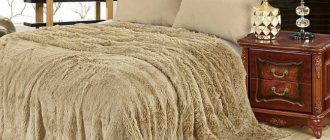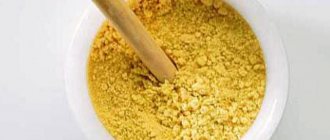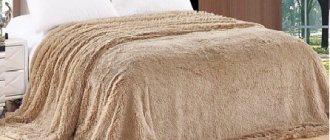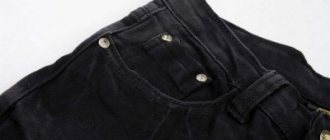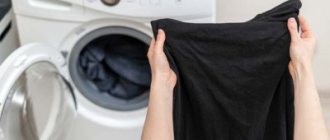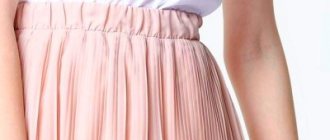Angora is a fabric that is obtained from the fluff of the Angora goat or Angora rabbit. It is a very soft, warm and elegant material with a silky sheen. Jackets and sweaters, hats and dresses, shawls and scarves, blankets and other products are knitted and made from angora.
However, during operation, the fibers begin to stretch and come out, so mixed fabrics with the addition of other fibers are in high demand. But even in this case, things require special care. In this article we will look at how to wash an angora jacket correctly.
Features of Angora
Today you can find items made from mixed materials: a mixture of merino and llama wool, acrylic, viscose and polyester. Products with the addition of synthetic fibers are the most affordable and durable, but during use they lose their thermal insulation properties and aesthetic appearance.
A mixture of angora down and natural materials, such as wool, creates more refined, elegant and luxurious products. They retain their thermal insulation qualities longer, but are also more expensive.
But the most popular due to their availability, strength and durability are products with the addition of synthetic fibers. Most often, these are things with a down content of 10-20%, acrylic 50% and polyester 40%.
What is it made from, what types are there?
Angora is made from the wool of rabbits or goats of this breed. Angora goats were originally bred in Turkey. The material has a low density, therefore it is lightweight. The warmest clothes weigh almost nothing. Depending on the type of animal and additional fibers, it is divided into several types:
- Mohair is made from goat down, the length of which can be up to thirty centimeters. The older the animal, the denser the hair. The softest wool is obtained from the first shearing of a kid up to six months. Mohair is stronger than rabbit down.
- Angora is pure rabbit fur. The length reaches twenty centimeters. It is more difficult to process, it constantly crawls out, and it will not be possible to fix it. Therefore, more than 20% rabbit fluff is not added to products. England, France and Germany produce most of this material.
- Lana is a high-quality, expensive wool-based material. Considered elite due to the addition of . There are two types: from the finest or regular merino fur. The finer the fluff, the softer and more delicate the fabric.
- Angora metallic additionally contains acrylic, polymer and silver-plated fibers. They help the fluff stay in place and not spread out.
- Melange is natural fur combined with artificial materials in contrasting colors. This is necessary to create the effect of marble chips.
- Suprem (drawstring fabric) is thin angora knitwear with the addition of lycra, stretches well and does not deform.
- Made from acrylic or viscose - an inexpensive, warm and soft fabric. Typically, elastane or polyester is added to make knitwear.
- Soft – artificial knitwear, imitation Angora wool. Usually it is polyester and elastane. Does not contain natural fluff. It comes with or without lint. In combination with lurex, the fabric for festive dresses is obtained. Lurex provokes allergies, it is recommended to wear such things over thin cotton.
To establish differences, goat down is marked WN, and rabbit down WA. sometimes they combine goat and rabbit hair at the same time.
Natural shades are white and gray, occasionally black. There is often a shine present. Products made from rabbit appear on sale more often. Angora lends itself well to coloring; it is not difficult to find multi-colored products, especially for children.
Angora is difficult to process; the fibers become electrified and slip. Textiles are in most cases made from a mixture of down and other threads. Commonly used fiber combinations:
- 70% angora wool and 30% nylon;
- 50% down, 25% merino fur, 25% polyester fibers;
- 40% fur, 50% any other wool, 10% nylon;
- 70% wool and 30% natural silk;
- 15% angora, 10% wool, 50% viscose threads and 25% nylon.
When processed with a laser beam, further use of the material is simplified. If you put this technology into mass production, you can use 100% wool for products.
The higher the percentage of natural fluff, the more expensive the textiles. For cheap products, fabrics with a content of up to 20% are used. Expensive materials start from 80%. They rarely appear on the public market. World famous brands make expensive clothes from them. Things with a percentage of angora of 25-30% have approximately the same thermal insulation properties and aesthetic appearance as expensive ones with pure rabbit fluff.
A few words about Angora wool:
- it was named after the Turkish city of Ankara, which was formerly called Angora;
- until the mid-nineteenth century there was a ban on the export of goats from the Ottoman Empire, until Sultan Abdulmecid gave several goats to the American James Davis;
- Up to one and a half kilograms of fluff are combed from one rabbit per year;
- pure mohair fabric can cost 4,500 rubles. per meter, it is often used to create collections by world-famous brands;
- Initially, Angora wool was obtained only from goats, but the Chinese were able to develop this breed of rabbits, and now they are bred in Europe;
- Angora goats are now produced only in Turkey, South Africa and the USA, in Texas.
Positive and negative aspects of matter
- soft, tender, fluffy and comfortable;
- shiny and silky, pleasant to look at;
- very light, almost weightless;
- maintains body temperature not only in cold winters, but also in hot summers;
- does not cause allergies, does not prick;
- The yarn can be easily dyed in any shade.
- short-lived, not wear-resistant;
- subject to deformation and abrasion;
- do not come into contact with water;
- Favorite food for moths.
With good care, the disadvantages will fade into the background, and the item will last a long time.
Rules for washing items made from angora wool
Before washing a sweater and other items made from angora, be sure to read the label and follow the recommendations. As a rule, such products can only be washed by hand. In exceptional cases, you can use an automatic machine. Choose a delicate or hand wash program.
Wash the product separately from others! For delicate garments, sew the buttonholes closed to prevent them from stretching. For washing and rinsing, choose a water temperature of 27-37 degrees.
Under no circumstances should strong and sudden temperature changes be allowed, otherwise the material will deform and lose its elasticity and original shape. Do not use hot water, as the item will shrink after washing it.
Dilute a suitable product in water and put an angora hat or any other thing there. If you wash a bedspread, blanket or bulky item, it is better to wash it directly in the bath.
Clean the product carefully, lightly scrunching the material with your hands. Treat stains and contaminated areas with additional detergent. Also, stains can be cleaned with a brush first and then washed. After the main wash, rinse the Angora fabric thoroughly several times.
Program selection
Each automatic washing machine has several programs designed to process various materials. Gentle washing is carried out using the “Delicate” mode. During spinning, the rotation speed of the drum decreases, preventing damage to the product. This mode is suitable for washing: silk, satin, viscose, angora, wool.
When the delicate mode is set, the drum operates intermittently. This allows you to completely eliminate deformation of a delicate item.
Angora laundry detergents
- Do not use powder products, as grains are difficult to wash out of fabric fibers even after thorough and repeated rinsing. Do not use acids, alkalis or various bleaches;
- Liquid detergents, including gels and shampoos for washing wool, work well. They have a soft and gentle effect on the material, are easy to rinse and at the same time wash the fabric well. Which washing gel is better to choose, see here;
- White baby soap without fragrances and dyes or standard laundry soap should be grated on a fine grater and diluted in water;
- A good quality mild hair shampoo and baby shampoo are suitable. It is important that the product does not create a large volume of foam;
- To rinse, use a special conditioner or glycerin. Dilute a teaspoon of glycerin in ten liters of water and rinse the product in the resulting solution. As a result, the fabric will remain soft and will not mat.
Where is angora fabric used?
Angora is used to make clothes for children and adults: dresses, skirts, sweaters, coats, suits, hats, scarves and mittens. The most popular product is socks. They are comfortable to wear with winter shoes. They are thin and the boots don’t feel tight like regular wool socks. The items are thin, but very warm. They are pleasant for northern residents to wear so as not to wear many layers of clothing. It is more convenient for children to play and move, especially in the winter season.
A blanket, shawl or stole made of angora will add warmth and comfort. Needlewomen purchase yarn to create warm, openwork clothing items. Angora-based knitwear is often purchased for children.
In combination with other types of wool fibers, this wool is used to make curtains, upholstery for armchairs and sofas, and pillows.
Before you buy an angora item, you need to request a certificate. A good store will provide it without any problems. Then the possibility of purchasing an artificial thing will be excluded.
How to dry angora clothes correctly
After washing, wrap your clothes in a terry towel to absorb moisture. Leave a large blanket or blanket to lie in the empty bath for ten minutes. Then roll the fabric into a roll, take it by the middle and lean it on the wall of the bathtub to form a structure in the shape of the letter P.
When the water has drained slightly, lay things out on a horizontal surface in a well-ventilated area. Smooth and level the canvas, remove folds and creases, and leave to dry completely.
Do not dry items on a hanger, hangers or hanging, otherwise they will stretch and lose their shape. Do not dry things in direct sunlight, on a radiator or using electrical appliances.
An Angora hat or other headdress is dried on a net, which is covered with a light cloth. To keep the product in shape, the hat can be pulled over a jar or blank, and the beret can be pulled over a plate. It is important that they fit exactly the size of the hats.
When the products are dry, comb the lint with a soft brush along the growth of the lint. Finish by sweeping the brush in the opposite direction to prevent pilling and material shedding. To make a sweater, hat or other item fluffy again, wrap the clothing in plastic and put it in the freezer for 8-15 hours.
Hand and machine washable
In relation to items made of delicate knitwear, you should be guided by the following rule: the less rabbit fluff they contain, the easier they are to care for. Therefore, when choosing a washing method, first of all, you should pay attention to the composition of the fabric and the manufacturer’s recommendations.
You can only wash products containing 10-50% angora. Premium items made from natural fiber are taken to professional dry cleaning 1-2 times a year.
Models that are not harmed by contact with water are best washed in a gentle way, that is, by hand. In this case, it is necessary to follow the following procedure:
- The product is turned inside out. The loops on the jacket and coat are sewn up with a temporary seam, and the voluminous collar is sewn to the main fabric of the sweater in the same way. If this is not done, these parts will stretch.
- Water is poured into the washing container. Its temperature should not exceed 40° (optimally 30-35°).
In hotter water, textiles will shrink significantly and the pile will fall off. - The selected detergent is dissolved in a basin, then immersed in it. Soaking time should not exceed 15 minutes. The exception is when the model needs to be bleached. Then it is left in the liquid for several hours.
- Even with high-quality twisting of the angora thread, it climbs a lot. To minimize this process during washing, the product should not be rubbed with your hands. It is lightly squeezed with your palms in different places, turning it over from time to time.
- Rinse a clean model several times, changing the water. The temperature of the rinse water should not differ from that selected for the main wash. During the last rinse, industrial conditioner or glycerin (1 tsp) is poured into the basin.
- The product is placed in an empty container and wait until most of the water has drained. Squeezing and twisting the fabric is prohibited.
When processing angora in a washing machine, you must follow the following rules:
- Prepare the product in the same way as for hand washing, carefully fold it and place it in a mesh bag. Only after that put it in the drum.
- Pour liquid detergent and conditioner into the machine's ditch.
- On the panel, select the “wool” or “delicate wash” mode. Disable “drying” and “spin”.
- Remove the clean item from the net and let it drain in an empty container.
How to bleach angora fabric
Most often, angora items are white. It is an attractive and luxurious color. However, such products quickly become dirty, turn yellow or take on a gray tint. In this case, do not use bleaches!
To bleach angora safely, add 50 grams of mild liquid detergent and five tablespoons of salt, 20 ml each of hydrogen peroxide and ammonia to warm water. Dip a light-colored item into the resulting mixture and leave for three to five hours.
Turn the product over periodically during the process. After this, wash the angora with a suitable detergent, rinse several times, and then dry as usual. It is important to properly care for items made of Angora wool so that they retain their original qualities and appearance longer.
Store such products folded on shelves. Do not hang sweaters or dresses on hangers, unless these are special hangers for woolen items and sweaters. Do not use plastic, polyethylene or other synthetic bags or covers for clothing for storage. If an item has been lying for a long time and has become wrinkled, hang the item in the bathroom for a day and it will straighten out. How and where to properly store clothes in the house, see the link.
Restoring angora clothing
Even if a jacket or other clothing has lost its appearance, you can try to restore it. To do this, do not rush to the store for special expensive products. The most effective formulations can be found in every home.
How to restore its softness and fluffiness:
- Freezer. This is the simplest method that does not require additional investment. The angora sweater should be placed in a clean plastic bag and placed in the freezer. Leave it there overnight. After this, lay the clothes out on a horizontal surface and let them warm up to room temperature. This extreme method will restore elasticity and shine to the fibers.
- Glycerol. It is better to purchase it immediately along with angora clothing. While rinsing, add 1 teaspoon of product to the water. It is recommended to repeat this procedure every time you wash.
- Turpentine and ammonia. Fill a bucket with warm water. Grate half a bar of laundry soap on a coarse grater and dissolve in water. Add 1 tbsp to soapy water. l turpentine and 2 tbsp. l ammonia. Soak the jacket overnight. It is not recommended to keep the product for longer than 12 hours. After this, rinse with an appropriate conditioner and dry.
- Ammonia and medical alcohol. It is necessary to dissolve 1 cup of soap shavings in a bucket of warm water. Stir and add 15 ml of ammonia and 5 ml of pure medical alcohol. Soak clothes. After 10-12 hours, remove the product, remove excess moisture, and dry a little with a terry towel. Lay the jacket out on the table and cover the top with a thin cotton cloth. Iron and finish drying.
After final drying, the items should be combed with a wide-toothed brush.
In order for angora items to last longer as mono, you should follow a few simple rules. How to extend the life of an Angora:
- Of all the new things, angora fluff will come out in large quantities. This is the norm. This is the peculiarity of this material. But the amount of fluff that falls out can be reduced somewhat. To do this, simply wash angora items in the required mode. After things dry, you need to shake them thoroughly. This will remove loose lint.
- There is no need to change the temperature of the washing and rinsing water much. A sharp drop has an aggressive effect on the fibers and they will lose their elasticity, which is extremely undesirable for the quality of the item.
- Always wash items on the wrong side only, this will help maintain the integrity of the fibers.
- Before cleaning, be sure to sew up buttonholes, if any. Otherwise, the loops are easy to stretch during the washing process.
Thus, it is not difficult to wash angora clothes; it is only important to follow the regime and choose a safe detergent for washing. If these conditions are met, the product will easily survive repeated machine and hand washes and at the same time retain its appearance and unique properties.
Reading time: 6 minutes
Angora is a fabric made from the softest goat or rabbit fluff. Pleasant to the touch, creates comfort and coziness. The material is difficult to care for, but with proper attention it will bring more joy than problems. Now there are many products made from completely synthetic material that imitates angora. In order not to run into a fake, you should buy the item from a trusted store.
How to wash a sweater - general rules
First of all, you need to study the product label. As a rule, it contains all the information on proper washing. It is undesirable to wash some materials automatically, preferring the manual method. Others, on the contrary, are not afraid of cleaning in the drum and can be safely sent to the machine. Despite different approaches when choosing a washing method, there are general rules that apply to any material, be it wool or acrylic:
- too hot water causes the product to shrink, so the sweater must be washed at neutral temperatures;
- Dry powders cannot be used, especially for natural fabrics, since the aggressive components in its composition can destroy the fibers, which will lead to tears and minor damage;
- spinning is eliminated completely, both during manual and machine processing;
- Dry the product flat out in a horizontal position, placing a towel or thick piece of fabric under it.
Acrylic
Acrylic can easily be washed in a washing machine, since it is not a natural material, but an artificial one based on a polymer base. Basic rules to remember if you decide to wash an acrylic sweater:
- water temperature - no more than 30°C;
- the product must be turned inside out and placed in a special mesh so that the woven loops do not catch on the surface of the drum and stretch;
- it is permissible to set double rinsing;
- Either eliminate the spin altogether, or set it to a minimum - up to 400 rpm.
It is strictly prohibited to use bleach when washing acrylic unless it is a light shade. But you can add an antistatic agent instead of an air conditioner, since the material tends to become electrified.
From angora
Taking into account the special properties of angora, sweaters made from it should only be washed by hand. The water temperature should not be more than 30°C. The washing process looks like this step by step:
- fill a bowl of water and dilute a suitable detergent in it;
- immerse the sweater in the solution and let it soak a little, but no more than 15-20 minutes;
- Angora is a very capricious material, so rubbing it is not allowed, nor is vigorous twisting and turning allowed;
- hold the product slightly in the water, trying not to squeeze it too much;
- rinse in warm running water until the foam completely disappears.
You should not squeeze the angora, but hanging it vertically is also not recommended. Wrap the sweater in a thick towel and press lightly to remove excess moisture. Next, the product must be aligned in shape and laid out horizontally on a flat surface.
Angora washing products should be chosen responsibly. You can use light laundry soap, neutral liquid soap, baby hair shampoo, or special products for angora. In addition, when washing during the rinsing process, you can add a little glycerin to the water - this will make the material soft and fluffy.
Woolen
You can wash wool in an automatic machine only if it is equipped with a “Wool” mode. If this is not available, only manual cleaning is recommended. In principle, the whole process is similar to washing an angora sweater. It is also not recommended to wash wool in hot water temperatures, since the material is very demanding and can easily shrink. The spin should be gentle and delicate. Drying - on a flat horizontal surface.
The main stage is drying
But the most important and responsible stage, both in hand washing and using a machine, is the correct and safe drying of your product.
Important!
It is strictly forbidden to hang a damp sweater on various ropes, dryers and other household appliances. Also, do not rush the drying process of the sweater by placing it near heating devices or radiators.
To begin, we take a large, dry terry towel with large pile and wrap our wet sweater in it, doing this carefully and neatly. And we wait for the towel to absorb the excess moisture. And only then we carefully lay out our product on a flat horizontal surface, preferably with a fresh, dry terry towel on it. Thanks to such a long and difficult drying procedure, we will return the presentable appearance of the sweater that it had when purchased.
Small tricks on how to add fluffiness
Well, the last stage is the return of the former pomp or fluffiness. To do this, you just need to carefully comb the sweater with a soft bristle brush.
Advice! Please note that the movements of the brush should be directed along the pile, and at the very end, scratch a few times against the grain.
If you follow all the nuances of gentle care, your favorite sweater will delight you for a long period. It is worth noting that all of the above tips can rightly be attributed to any things and products made from this amazing fabric (hats, mittens or socks).
Merino wool blanket
How to fold a shirt
Shrinkage rules
You can easily return your favorite clothes to their previous appearance and you don’t have to specifically buy expensive powders or other detergents.
Any of you can do this at home. In order for a knitted item from a stretched product to become its former self again, you need to remember some rules for the shrinkage of such items:
- you must know the exact composition of the wool product. This is easy to do, since all the information should be on the tag;
- the degree of shrinkage of a particular woolen item depends on the temperature of the water in which it will be washed;
- information about the comfortable temperature, what method and mode you can wash the product in can also be found on the tag;
- remember that when water is too hot, the fibers become softer, and from rapid rotation, for example, when washing in an automatic machine, knitted and woolen items become smaller;
- knitted clothes can be washed in a washing machine or by hand to make them shrink;
- In order for a stretched wool hat to return to its previous size, it will be enough to dry it in the usual way after washing. That is, without using a towel;
- Before drying, you should never shake the item, otherwise shrinkage will not occur and the item will remain stretched.
Instructions
Before wearing, wash new clothes and, after drying, shake them several times. Over time, the amount of hair coming out will decrease significantly.
Wash items made from Angora wool in lukewarm water (about 30 degrees) and, importantly, rinse in clean water of the same temperature. With a sharp change in temperature, wool yarn quickly loses its elasticity and the product may become deformed.
Use washing powder for gentle and delicate washing. You should absolutely not use powders containing bleaches.
Washing the angora
not necessarily manually. Almost all modern washing machines have a gentle wool washing program. This program takes into account the special properties of wool fibers. The water temperature is no higher than body temperature.
Before washing, you should temporarily sew up the buttonholes. Then they won't stretch.
You can add a little glycerin to the rinse water (about one teaspoon per eight to ten liters). This way the wool will not mat and will be very soft.
Sometimes it is recommended to wash angora products with hair shampoo. This is a good product, but after washing you will have to rinse your clothes very thoroughly to remove excess foam.
After washing, do not wring things out, much less twist them. Clothes should be carefully laid out on a terry towel on a table or on a special drying rack (rack).
Brush almost dry Angora wool with a brush. First, along the pile, then carefully against the pile. This will prevent the wool from matting and extend the life of the product.
To restore the fluffiness of the angora wool pile, it is recommended to put the folded clothes in a bag and place them in the freezer for 13-15 hours.
Among lovers of cozy things, despite the rather high price, products made from natural angora, a woolen fabric based on the fluff of certain breeds of Angora rabbit or goat, are popular. And there is a simple explanation for this. Thanks to the properties that create an unsurpassed feeling of warmth and care, clothes made from this fabric are highly valued and occupy a worthy position in the market.
When purchasing such a wonderful, delicate and fluffy thing as an angora sweater, the last thing any buyer thinks about is how he will wash and care for it in the future. After all, the product is new and it is literally permeated with airiness and affection, but over time, such a product loses its consumer qualities and original luster. Pills form on the sweater, the fluffiness loses volume, and the fibers stick together and what we see is completely different from what we bought. But don't despair!
Important!
If you follow the recommendations described below, you can easily restore the original appearance and sophistication of your favorite item.
For impeccable washing, we need any baby soap, preferably white and without additional dyes and creams, as well as glycerin, which is sold at any nearby pharmacy or specialized soap making store.
For reference!
Soap can be replaced with regular baby shampoo, but this risks creating too much foam during washing and then removing it will be very problematic, so it’s better to opt for soap.
Then we collect water into the container where we will do the washing; the water temperature should not exceed forty degrees, and preferably in the range of 36–37.
It’s easy to check even without a thermometer, just drop some water on the back of your wrist and if you feel a difference, you just need to adjust the temperature by adding warm or cold water.
Next, crumble the soap, perform this operation with a kitchen knife to obtain thinner chips and add a spoonful of glycerin. Mix the resulting composition thoroughly and lower the sweater into it. Be sure to turn the item inside out before washing. We wash it carefully and carefully, and then rinse it; it is advisable to repeat this procedure several times.
Important!
After rinsing, you should lightly wring out the sweater without using force, otherwise you will deform the fabric. The next stage is drying, we’ll talk about this later.
